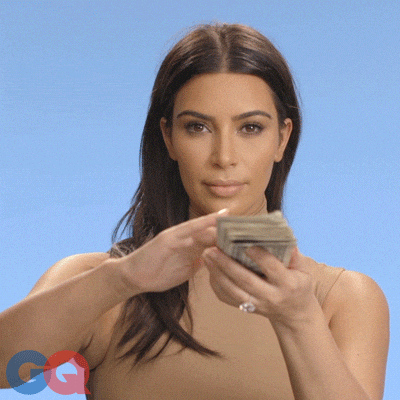Why Content Creators Are The New Solo Entrepreneurs
How 15 Million Content Creators Earn 6-Figures From Their Home

Aren’t “Content Creators” Just Influencers?
Not exactly. Let’s look at content creators and influencers in the context of brand deals. Brand deals are the mainstay of social media income. Traditionally, influencers garner a massive following and upsell their followers by promoting products. Content creators, on the other hand, aren’t as focused on upselling their audience. Rather, they create user-generated content, or “UGC” for brands to use as ads through their own social media. There’s less value from a brand’s perspective in leveraging the content creator’s following. It’s more about their skillset and capabilities as a creator. Think of a content creator’s follower count as a degree on a resume. You’ll need a decent one to get hired. Some are better than others, and will potentially earn you more money. But you definitely won’t get the job if you don’t have one at all. Let’s dive in…
Good news for you if you’re trying to break into the UGC industry; the skills are largely self-taught and the barriers to entry are much, much lower than being an influencer. You no longer need a million followers to make money on social media. 10K will do just fine. In fact, TikTok’s threshold for joining the Creativity Program Beta, which allows you to start earning money as a creator, starts at 10K followers. Content creators are like creative strategists, social media actors, and digital marketers all wrapped together. Brands want to see that you can create compelling ads from start to finish, so they can pump marketing dollars behind them. And so, in the span of ~four years (your first Covid sneeze ‘till now), there’s an entirely new generation of solo entrepreneurs who’ve cracked the code to earning 6 figures from home. Let’s look at some 2023 statistics about the creator industry (source: Josh Howarth, “Exploding Topics”).
Content Creator Industry (2023)
Number of global content creators: +$200 million
Global influencer market size (content creators included): +$21 billion
139 million have between 1K - 10K followers
Only 4 million have +100K followers
11% earn between $50K - $100K, 7% earn between $100K - $500K
52% of content creators earning between $50K - $100K work 10 hours or less per week
Simple math tells us there’s real money to be made in this industry. Perhaps the most valuable statistic is that full-time content creators are 4x more likely to earn $50K or more per year. This makes a lot of sense if you think about it. Treat it like a business and it’ll become one. I can attest to this, as I had my first $10K month as a content creator 2 months after setting up my LLC. No coincidence. Let’s take a look at what a UGC marketing campaign looks like.
UGC At A Glance
The Creative Brief:
Whether you source a deal through an agency or pitch a brand directly, every UGC campaign typically starts with a creative brief. The brief is an outline for the campaign. A storyboard, if you will. It includes product descriptions, video examples for inspiration, do’s and don’ts, the brand’s mission, objectives, and likely a preliminary script or talking points for the creator to draft a fully cooked script.
The Script:
A typical UGC script follows the format below:
Hook: an enticing hook to catch the viewer’s attention
Problem: addressing some issues that the product will be solving
Solution: using the product to solve the issue
CTA: a closing statement or “call-to-action” encouraging the viewer to take action (buy a product, check out the website, etc.)
Filming and Editing:
The brilliant reality of UGC is that ads are created 100% from smartphones. It’s even required. The whole UGC and short-form content ecosystem thrives on authenticity. This is why we’ve seen a shift in more raw content on social media compared to the mid-2010s polished Instagram aesthetic. CapCut is the number one content creator video editing app used for UGC ads, and the free version is more than sufficient.
Iterations:
Expect at least one, potentially two rounds of edits when submitting final content to a brand. As you get better at it, you’ll iterate less (maybe even never if your ads look like these).
B-Roll, Raw Content, and Final Ad Submission
Most campaigns require b-roll submissions. B-roll is supplemental footage that splices the main content of an ad. When someone is speaking to the camera followed by a transition to action footage, meanwhile the original voice continues in that background, those action shots are b-roll. Raw content is all content recorded for the campaign in its original form, and a final ad is the fully edited content.
What’s Next?
Next week we’re spilling the T on 30 reputable UGC agencies for inbound campaigns. I’ve worked with all 30 of these agencies personally, and they’ve landed me name-brand campaigns including Indochino, Untuckit, Dove, TGI Fridays, Hims, C4 pre-workout, YSL, and dozens more. I’ll be tiering these agencies 1-3 based on my compensation rates and my overall experience. Please like, subscribe, and comment. What would you like to hear about?
Stay creative,
Josh Hublitz

Reply